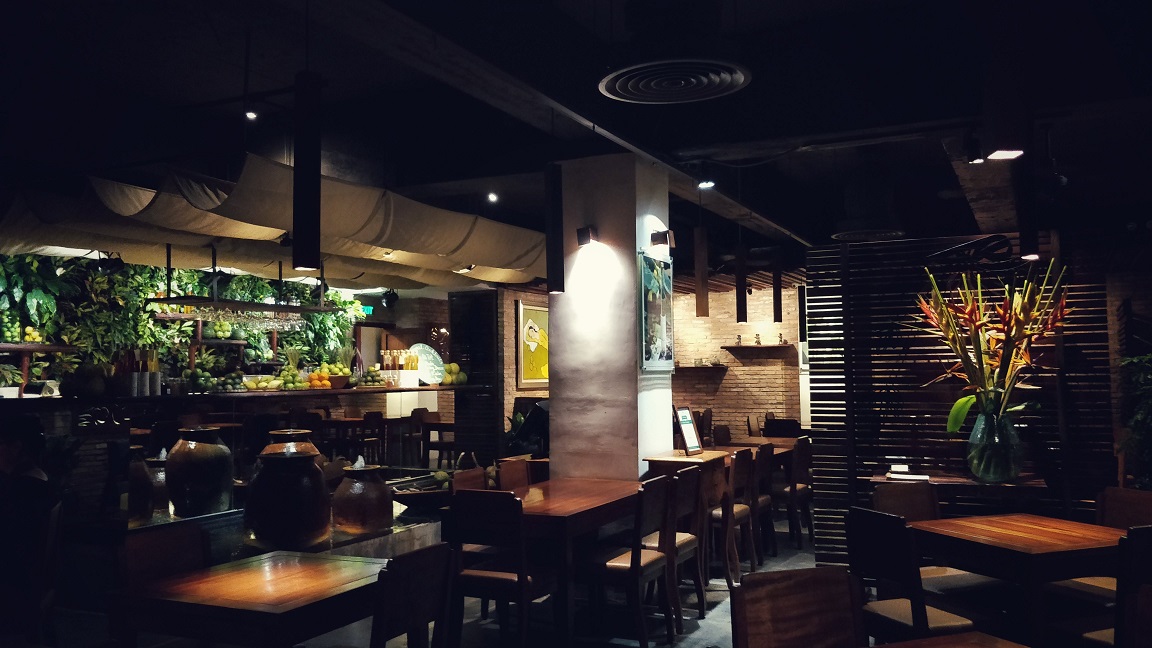Asian Fusion Restaurant: An One-of-a-kind Dining Experience in the Heart of Islamabad
Asian Fusion Restaurant: An One-of-a-kind Dining Experience in the Heart of Islamabad
Blog Article
Savor Genuine Eastern Food With a Pan-Asian Spin for a Culinary Journey
Embarking on a culinary journey via authentic Eastern cuisine, enhanced with a Pan-Asian spin, uses a distinct opportunity to check out the rich tapestry of flavors that define the area's diverse cooking traditions. As you consider these enticing meals, consider the cultural narratives and historic impacts that shape them, each bite supplying a tale waiting to be uncovered. Romantic restaurants Islamabad.

Exploring Pan-Asian Tastes
In the realm of international gastronomy, Pan-Asian food sticks out for its impressive diversity and the unified interaction of flavors from different Asian cultures. This cooking method celebrates the abundant traditions and special ingredients located throughout the continent, creating a tapestry of tastes that is both enjoyable and interesting. Secret to Pan-Asian cuisine is its capacity to balance different flavors-- wonderful, salted, spicy, and sour-- while highlighting the quality and quality of each ingredient.
From the umami-rich soy sauce of Japan to the fiery chili peppers of Thailand, Pan-Asian cuisine supplies an extensive palette of tastes. These components are frequently incorporated in creative ways, boosting dishes with layers of complexity. For circumstances, making use of aromatic herbs such as lemongrass and cilantro, common in Vietnamese and Thai cuisine, adds a rejuvenating brightness to dishes, while the incorporation of coconut milk provides a velvety, rich appearance.
The focus on fresh produce and fragrant spices ensures that each meal is not only a banquet for the taste buds yet additionally for the senses. Pan-Asian food invites diners to start a cooking journey, discovering the huge and differed landscapes of Eastern gastronomy with every bite.
Combination Dishes to Attempt
While Pan-Asian cuisine is commemorated for its conventional flavors, the modern-day cooking landscape is significantly accepting combination dishes that blend these traditional components with impacts from other areas. This cutting-edge approach not only honors the abundant heritage of Oriental culinary arts yet also introduces unique preference experiences that appeal to contemporary tastes buds.
A prime instance of such a blend dish is the Korean-Mexican taco, where marinaded bulgogi beef is covered in a cozy tortilla, covered with kimchi and a zesty gochujang-infused salsa. This mix marries the strong, savory tastes of Korea with the lively, fresh aspects of Mexican cuisine. Likewise, sushi burritos have actually gotten appeal, amalgamating the delicate artistry of Japanese sushi with the passionate, hand-held convenience of a burrito, commonly including fusion ingredients like tempura shrimp and avocado with a drizzle of wasabi mayo.
One more noteworthy meal is Thai curry ramen, which instills the velvety, fragrant seasonings of Thai curry right into the calming brew of typical Japanese ramen, producing a harmonious blend that entices the detects. These fusion recipes extend past mere novelty; they stand for a cooking discussion in between societies, motivating expedition and technology worldwide of Pan-Asian food.
Necessary Ingredients and Spices
To really value Pan-Asian food, one need to understand the vital components and spices that form its foundation. This diverse culinary design attracts from a rich tapestry of Oriental customs, employing a harmonious blend of tastes and appearances. Trick components consist of soy sauce, fish sauce, and oyster sauce, which pass on a full-flavored umami deepness important to Oriental dishes. Complementary to these are rice vinegar and mirin, providing a delicate level of acidity and sweetness.
Aromatic elements are pivotal, with lemongrass, ginger, and garlic being ubiquitous across various Pan-Asian dishes. These active ingredients offer a great smelling base that boosts the complexity of tastes. Spices such as star anise, cardamom, and cinnamon present heat and personality, resembling impacts from regions like China and India.

Food Preparation Strategies and Tips
Mastering the art of Pan-Asian cuisine needs knowledge with its distinct cooking methods, each adding to the vivid tapestry of tastes this cooking custom is celebrated for. Central to these methods is the stir-fry, a rapid cooking method that maintains the nutritional integrity and vivid colors of ingredients. Utilizing a wok, the stir-fry approach enables also warmth distribution, vital for accomplishing the particular structure and taste balance of Pan-Asian meals.
One more fundamental strategy is steaming, particularly widespread in Chinese cuisine. This gentle method keeps the natural tastes and nutrients of components, making it ideal for seafood and veggies. Dumplings, a cherished staple, frequently take advantage of steaming, causing soft, succulent structures.
Grilling, likewise integral, passes on smoky depths to recipes such as Oriental bulgogi or Japanese yakitori (Fine dining experience Islamabad). This technique often involves marinading ingredients, enabling tastes to permeate deeply before cooking over an open flame or warmer
Finally, mastering the art of balancing flavors-- wonderful, sour, salted, bitter, and umami-- is vital. Correctly layering these aspects can boost a meal from regular to amazing, using a complicated and pleasing cooking experience that personifies the essence of Pan-Asian food.
Eating Experiences Worldwide
Throughout the world, Pan-Asian food uses an unrivaled dining experience, celebrated his response for its abundant tapestry of flavors and dynamic discussions. This culinary phenomenon has transcended cultural limits, capturing the hearts and tastes of food fanatics worldwide. In cosmopolitan cities fresh York, London, and Sydney, Pan-Asian restaurants work as melting pots where cooking customs from Thailand, Japan, China, and beyond converge, offering diners with an eclectic mix of dishes that highlight the area's variety.
The worldwide appeal of Pan-Asian cuisine depends on its capability to provide both credibility and development. Chefs masterfully marry conventional active ingredients such as lemongrass, soy sauce, and miso with modern Visit Your URL techniques, causing recipes that are both refreshingly new and acquainted. This blend enables restaurants to start a culinary journey that appreciates heritage while embracing modernity.
Additionally, dining experiences are boosted through thoughtfully developed environments that reflect the ethos of Pan-Asian appearances. From minimal Japanese-inspired insides to lively Thai-themed rooms, each dining establishment provides an unique setting that matches the cooking offerings. Because of this, customers are not just eating a meal but partaking in a cultural experience, making Pan-Asian eating a really worldwide phenomenon.
Verdict
The exploration of Pan-Asian cuisine supplies an extensive understanding of the intricate interplay of tastes and culinary practices across Asia. By embracing fusion meals such as Thai curry ramen and sushi burritos, the culinary trip not just highlights the flexibility of standard ingredients however also showcases cutting-edge modern-day techniques. This gastronomic adventure, improved by cooking approaches and vital seasonings, supplies a special opportunity to appreciate the multiculturalism and cooking artistry that define Pan-Asian food on a worldwide range.
Beginning on a cooking trip through authentic Eastern cuisine, improved with a Pan-Asian spin, provides an unique chance to athens pizza explore the abundant tapestry of flavors that specify the region's diverse culinary practices.In the world of worldwide gastronomy, Pan-Asian food stands out for its remarkable variety and the harmonious interaction of tastes from various Eastern societies. Key to Pan-Asian cuisine is its capacity to stabilize contrasting tastes-- sweet, salty, spicy, and sour-- while highlighting the quality and quality of each active ingredient.

Report this page